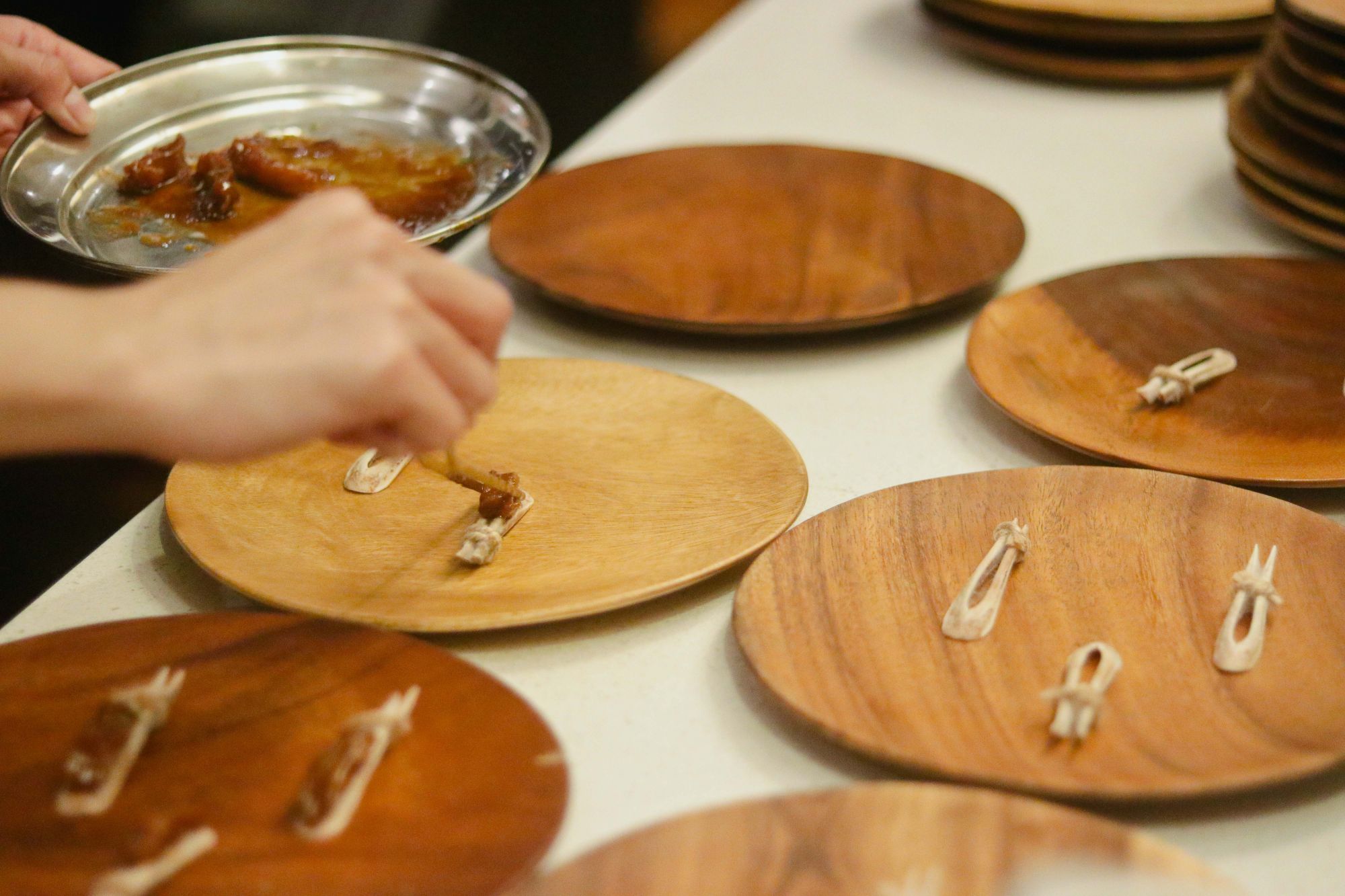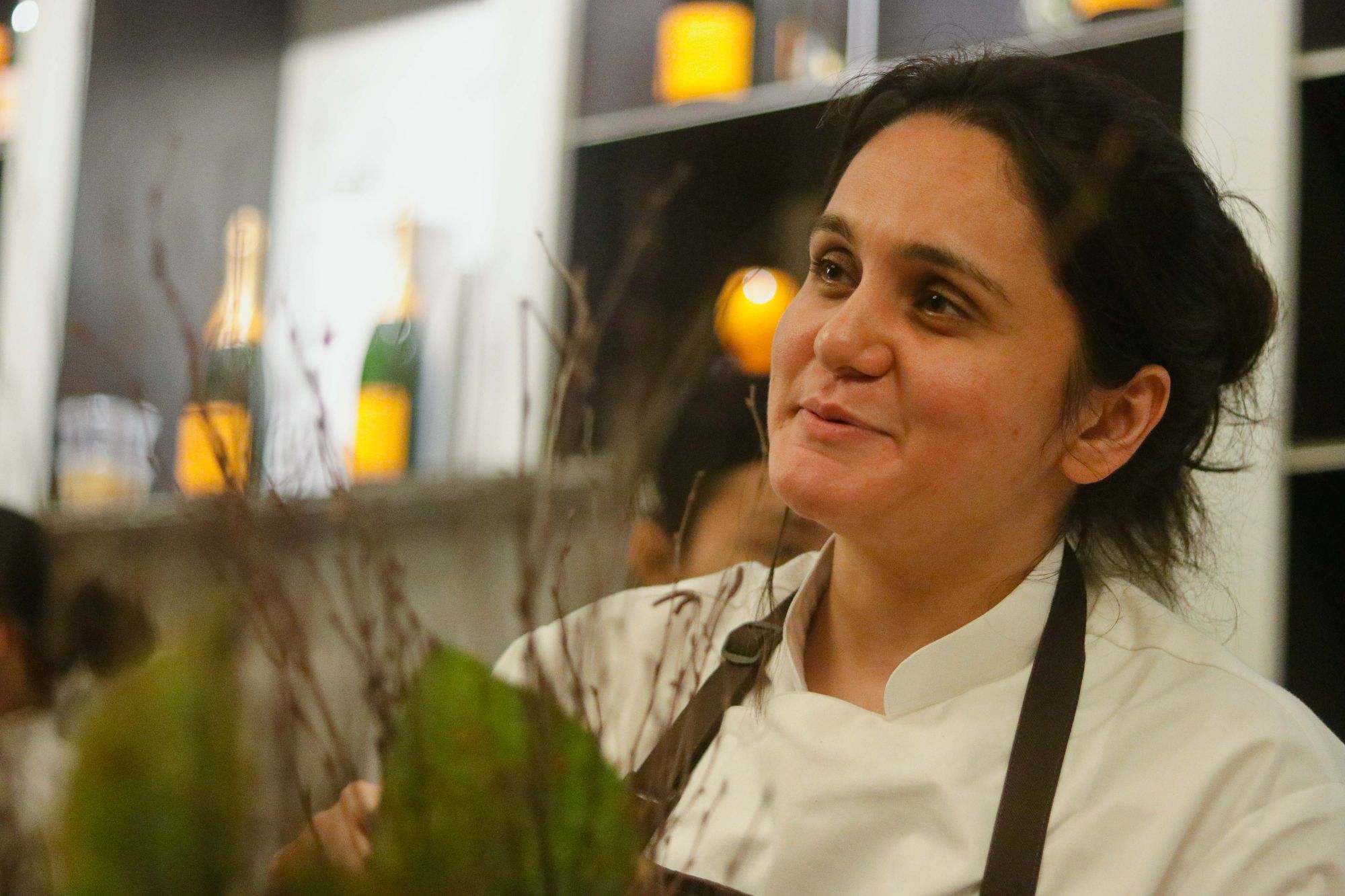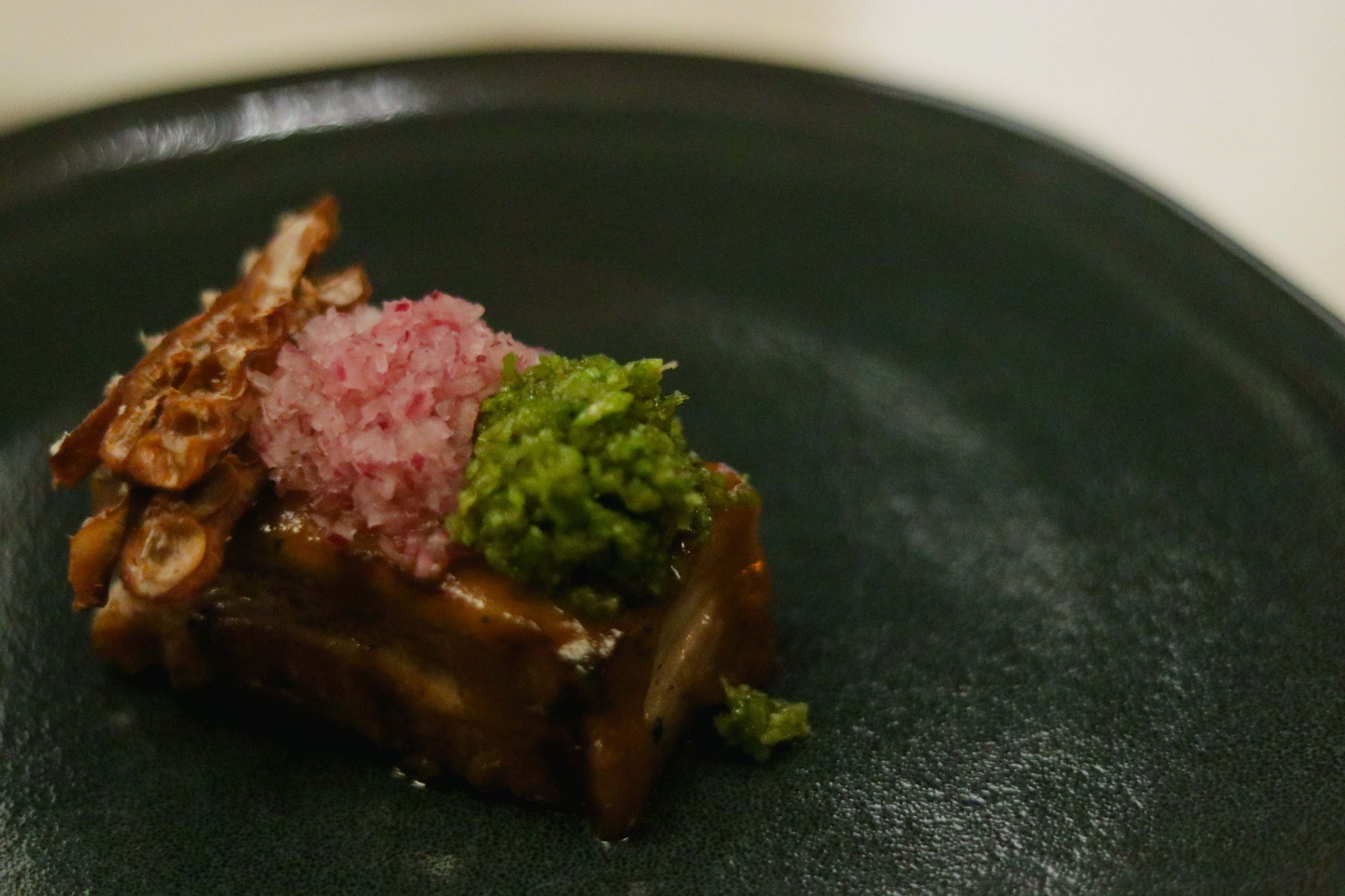Visually inviting, the grilled pork belly topped with pomegranate, onion and coriander, was an exquisite lesson on how to prepare, cook, and present anything porcine. Adding textural drama, Arora augmented with tamarind vines and shallots. Never the popular choice in the Philippines, Forés complemented Madendjian on the wine pairing, Cloudy Bay’s cherry and plum-forward pinot noir, remarking that she ought to include it on all her menus.
Sweets were next and the first dessert of burnt coconut sugar ice cream liberally sprinkled with fluffy pork floss emerged from the kitchen. The addition of the salty-sweet pork floss, a familiar Thai street food, to the perfectly executed ice cream, showcased Arora’s knack for making something so simple and accessible, luxuriously exotic. Paired with a chilled Veuve, the bubbles and salt were meant to be.
The bitter sweet ending, both literally and figuratively, was the dark chocolate covered betel leaf, also beautifully bolstered by the vanilla and brioche notes of the champers. Arora, if you’re reading this, you need to mass produce your chocolate betel leaf and package it as the next big thing in Thai exports!


















